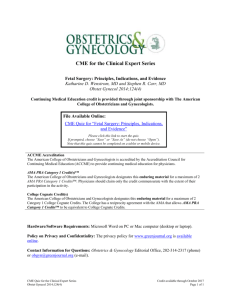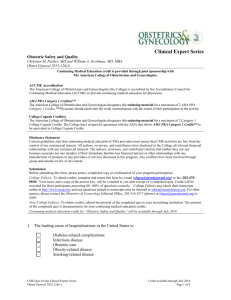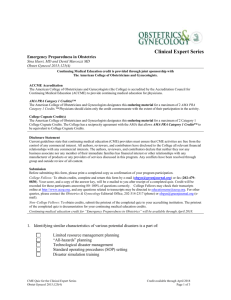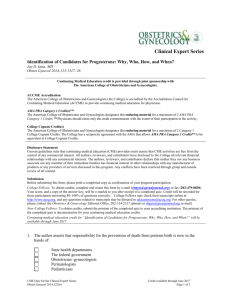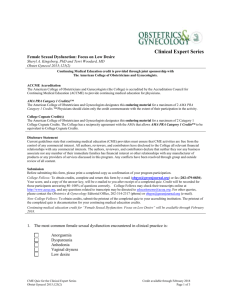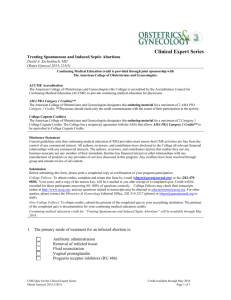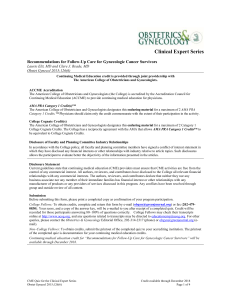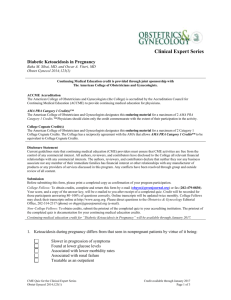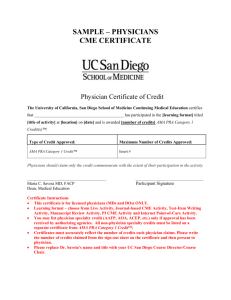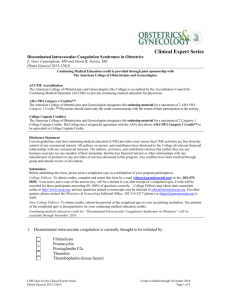Puerperal Group A Streptococcal
advertisement
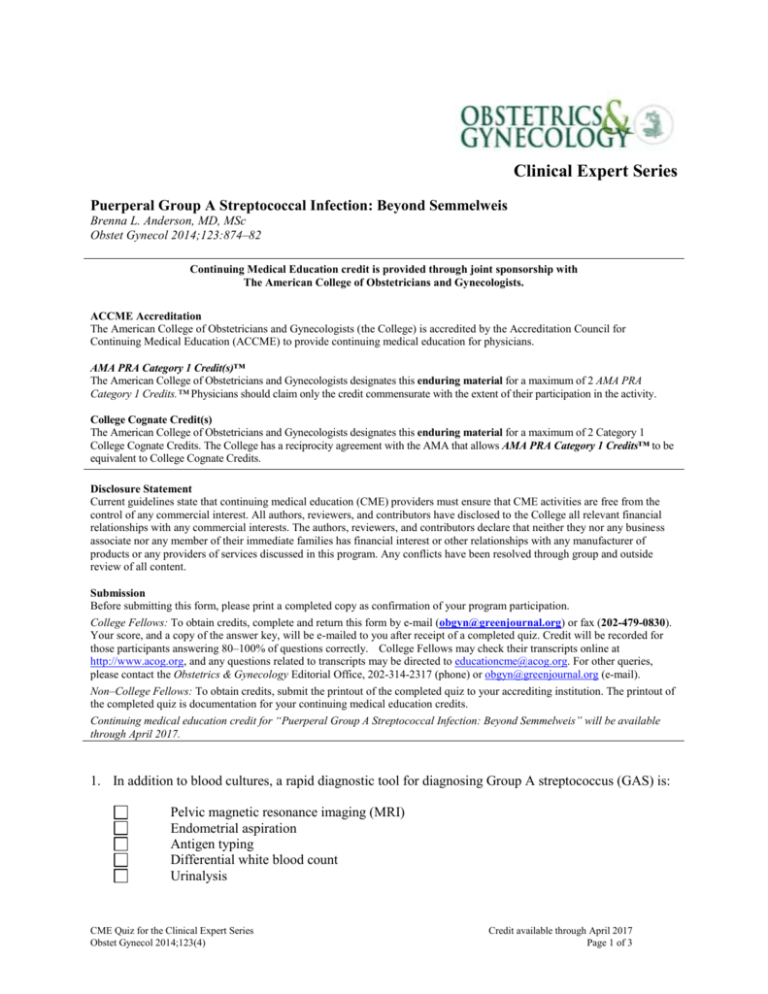
Clinical Expert Series Puerperal Group A Streptococcal Infection: Beyond Semmelweis Brenna L. Anderson, MD, MSc Obstet Gynecol 2014;123:874–82 Continuing Medical Education credit is provided through joint sponsorship with The American College of Obstetricians and Gynecologists. ACCME Accreditation The American College of Obstetricians and Gynecologists (the College) is accredited by the Accreditation Council for Continuing Medical Education (ACCME) to provide continuing medical education for physicians. AMA PRA Category 1 Credit(s)™ The American College of Obstetricians and Gynecologists designates this enduring material for a maximum of 2 AMA PRA Category 1 Credits.™ Physicians should claim only the credit commensurate with the extent of their participation in the activity. College Cognate Credit(s) The American College of Obstetricians and Gynecologists designates this enduring material for a maximum of 2 Category 1 College Cognate Credits. The College has a reciprocity agreement with the AMA that allows AMA PRA Category 1 Credits™ to be equivalent to College Cognate Credits. Disclosure Statement Current guidelines state that continuing medical education (CME) providers must ensure that CME activities are free from the control of any commercial interest. All authors, reviewers, and contributors have disclosed to the College all relevant financial relationships with any commercial interests. The authors, reviewers, and contributors declare that neither they nor any business associate nor any member of their immediate families has financial interest or other relationships with any manufacturer of products or any providers of services discussed in this program. Any conflicts have been resolved through group and outside review of all content. Submission Before submitting this form, please print a completed copy as confirmation of your program participation. College Fellows: To obtain credits, complete and return this form by e-mail (obgyn@greenjournal.org) or fax (202-479-0830). Your score, and a copy of the answer key, will be e-mailed to you after receipt of a completed quiz. Credit will be recorded for those participants answering 80–100% of questions correctly. College Fellows may check their transcripts online at http://www.acog.org, and any questions related to transcripts may be directed to educationcme@acog.org. For other queries, please contact the Obstetrics & Gynecology Editorial Office, 202-314-2317 (phone) or obgyn@greenjournal.org (e-mail). Non–College Fellows: To obtain credits, submit the printout of the completed quiz to your accrediting institution. The printout of the completed quiz is documentation for your continuing medical education credits. Continuing medical education credit for “Puerperal Group A Streptococcal Infection: Beyond Semmelweis” will be available through April 2017. 1. In addition to blood cultures, a rapid diagnostic tool for diagnosing Group A streptococcus (GAS) is: Pelvic magnetic resonance imaging (MRI) Endometrial aspiration Antigen typing Differential white blood count Urinalysis CME Quiz for the Clinical Expert Series Obstet Gynecol 2014;123(4) Credit available through April 2017 Page 1 of 3 2. Which of the following accounts for the majority of noninvasive Group A streptococcus (GAS) infections? Urinary tract infection Superficial skin infection Lower intestinal infection Vaginal infection Upper respiratory tract infection 3. The majority of deaths from Group A streptococcus (GAS) occur from: Necrotizing fasciitis Streptococcal toxic shock syndrome Streptococcal pyelonephritis Group A streptococcal pneumonia Streptococcus pyogenes encephalitis 4. The effect of pregnancy on Group A streptococcus (GAS) is an increase in the: Severity of disease Frequency of disease Duration of the disease Risk of urinary tract involvement Rate of antibiotic resistance of the bacteria 5. Profound hypotension and diffuse capillary leaking found in invasive Group A streptococcal infections is due to: M surface proteins Inflammatory cytokines Increased T cell production Elaborated proteases Tissue liquefaction 6. The tenant of invasive Group A streptococcal infection management referred to as “source control” consists of: Wound isolation Surgical debridement High-dose antibiosis Patient isolation Increased hand hygiene CME Quiz for the Clinical Expert Series Obstet Gynecol 2014;123(4) Credit available through April 2017 Page 2 of 3 7. The most significant impact of the “Eagle Effect” in the treatment of Group A streptococcal infections is: An allergy to eggs Reduced penicillin efficacy Increased visual acuity A red, white, and blue skin rash The need to use only antibiotics made in America College ID Number: Name: Address: City/State/Zip: E-mail Address: Actual time spent completing this activity (you may record up to 2 hours): CME Quiz for the Clinical Expert Series Obstet Gynecol 2014;123(4) Credit available through April 2017 Page 3 of 3
